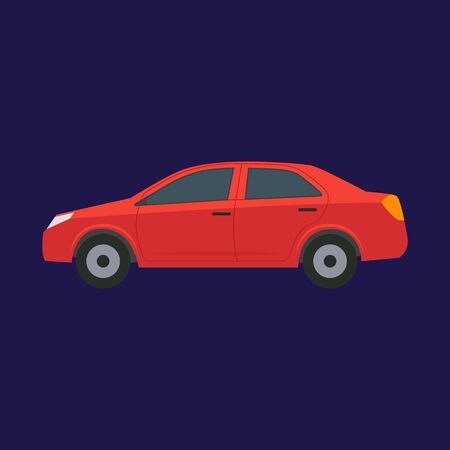1. Get Plenty of Rest Before Your Trip
Ensure you are well-rested before hitting the road to reduce the risk of drowsy driving. A good nights sleep is essential to staying alert, especially if you’re planning a long drive. Lack of sleep can slow down your reaction time, impair decision-making, and increase the chances of accidents. Here are a few tips to make sure you’re well-rested before your trip:
Plan Your Sleep Schedule
Try to get at least 7 to 9 hours of sleep the night before your trip. If possible, adjust your sleep schedule a few days in advance to align with your planned driving hours. Avoid staying up late packing or preparing for your trip, as this can leave you feeling exhausted before you even start driving.
Take a Nap If Needed
If you didn’t get enough rest the night before, a short nap before you leave can help improve alertness. A 20 to 30-minute nap can give you a quick energy boost without making you feel groggy.
Recognize the Signs of Fatigue
Even if you feel well-rested at the start, fatigue can still set in during your drive. Watch out for signs of drowsiness such as:
| Signs of Fatigue | What It Means |
|---|---|
| Frequent yawning | Your body is trying to get more oxygen due to tiredness. |
| Heavy eyelids or blurred vision | You may struggle to keep your eyes open and focus on the road. |
| Drifting out of your lane | Your coordination is compromised, increasing crash risks. |
| Difficulty remembering the last few miles | Your attention is fading, which is dangerous while driving. |
If you notice any of these signs, pull over safely and take a break or a short nap before continuing your journey.
2. Take Regular Breaks
Long road trips can be exhausting, and fatigue can sneak up on you before you realize it. To stay alert and avoid drowsy driving, its essential to take regular breaks. A good rule of thumb is to stop every two hours or 100 miles to stretch, walk around, and refresh yourself.
Why Regular Breaks Matter
Sitting in the same position for an extended period can lead to stiffness, reduced circulation, and mental fatigue. Taking breaks helps you reset both physically and mentally, making it easier to stay focused on the road ahead.
How to Take Effective Breaks
Simply pulling over isn’t enough—you need to use your break time wisely. Here are a few things you can do during your stop:
- Stretch: Loosen up your muscles to relieve tension and improve blood circulation.
- Walk Around: Moving around helps wake up your body and mind.
- Hydrate: Drink water to stay energized and prevent dehydration.
- Eat a Light Snack: Healthy snacks like nuts or fruit can help prevent energy crashes.
- Get Some Fresh Air: A few deep breaths of fresh air can do wonders for alertness.
Break Frequency Guide
Here’s a simple guide to help you plan your breaks based on driving time and distance:
| Driving Time | Distance (Approx.) | Recommended Break Time |
|---|---|---|
| 2 hours | 100 miles | 15-20 minutes |
| 4 hours | 200 miles | 30 minutes |
| 6 hours | 300 miles | 45 minutes |
Plan Your Stops
Before your trip, map out potential rest stops, gas stations, or areas with scenic views where you can take a break. This not only helps you stay alert but also makes your journey more enjoyable.
By taking regular breaks, you’ll reduce fatigue, stay focused, and enjoy a safer and more comfortable road trip.

3. Stay Hydrated and Eat Healthy Snacks
Keeping your body hydrated and fueled with the right snacks is essential for maintaining focus and energy during long drives. Dehydration and poor food choices can contribute to fatigue, making it harder to stay alert on the road.
Drink Enough Water
Dehydration can cause headaches, dizziness, and drowsiness—none of which are ideal when driving. Make sure to drink plenty of water throughout your trip. A good rule of thumb is to sip water consistently rather than waiting until you feel thirsty.
Tips for Staying Hydrated
- Keep a reusable water bottle within reach.
- Avoid excessive caffeine, as it can lead to dehydration.
- Drink small amounts frequently instead of large amounts at once.
Choose Healthy Snacks
Eating the right snacks can keep your energy levels stable and prevent sudden crashes in alertness. Avoid sugary snacks that may cause a quick boost followed by an energy drop. Instead, opt for light, protein-rich foods to stay energized.
Best Snacks for Long Drives
| Snack | Why Its Good |
|---|---|
| Almonds | Rich in protein and healthy fats for sustained energy |
| String cheese | Provides protein to keep you full longer |
| Greek yogurt | Loaded with protein and probiotics for digestion |
| Apple slices with peanut butter | Balanced combination of fiber, protein, and healthy fats |
| Granola bars (low sugar) | A convenient source of fiber and protein |
Pro Tip:
Pack your snacks in portioned bags to avoid overeating, and take breaks when eating to prevent distractions while driving.
4. Share Driving Responsibilities
If possible, switch drivers periodically to prevent fatigue and keep everyone alert. Long stretches behind the wheel can take a serious toll on your concentration and reaction time. By sharing driving responsibilities, you can reduce the risk of drowsy driving and make the trip more enjoyable for everyone.
Plan Driver Swaps in Advance
Before you hit the road, decide when and where you’ll switch drivers. A good rule of thumb is to swap every two to three hours or whenever someone starts feeling tired. Rest stops, gas stations, or food breaks are great opportunities to change drivers.
Know the Signs of Driver Fatigue
Pay attention to warning signs that indicate a driver needs a break. If the driver experiences any of the following symptoms, it’s time to switch:
| Signs of Driver Fatigue |
|---|
| Frequent yawning or blinking |
| Difficulty keeping eyes open |
| Drifting out of the lane |
| Missing road signs or exits |
| Struggling to maintain speed |
Recognizing the signs early and taking action can help ensure a safer journey.
Make the Most of Your Breaks
Whenever you switch drivers, take a few minutes to stretch, walk around, and refresh yourself. Staying physically active during breaks can help reduce stiffness and improve circulation, keeping everyone more alert behind the wheel.
Use a Co-Pilot System
Even if youre not driving, stay engaged as a co-pilot. Help navigate, keep an eye on traffic conditions, and remind the driver to take breaks. A good co-pilot can make a big difference in keeping the trip safe and smooth.
Final Thoughts on Driver Swaps
Rotating drivers isnt just about convenience—its a crucial step in preventing accidents caused by fatigue. By planning ahead, recognizing fatigue signs, and taking breaks wisely, you can keep the road trip safe and enjoyable for everyone.
5. Five. Recognize the Signs of Drowsiness
Driving long distances can be exhausting, and drowsiness can creep up on you before you realize it. That’s why it’s important to recognize the warning signs early and take action before it’s too late.
Common Warning Signs of Drowsy Driving
Fatigue affects your reaction time, judgment, and ability to stay focused. If you notice any of these signs, it’s time to pull over and take a break.
| Warning Sign | What It Means |
|---|---|
| Frequent yawning | Your body is trying to get more oxygen, signaling that you need rest. |
| Heavy eyelids | Your eyes feel tired, and you may have difficulty keeping them open. |
| Drifting out of your lane | You find yourself unintentionally moving toward the shoulder or another lane. |
| Missing road signs or turns | Your concentration is fading, and youre less aware of your surroundings. |
| Head nodding | Your head keeps dropping as you struggle to stay awake. |
What to Do If You Feel Drowsy
Ignoring these signs can be dangerous. If you experience any of them, don’t push through. Instead, follow these steps:
- Pull over to a safe rest area and take a short nap (15–30 minutes).
- Stretch or take a quick walk to boost circulation.
- Drink a caffeinated beverage, but remember that it takes about 30 minutes to take effect.
- If possible, switch drivers to allow yourself time to rest.
- Consider stopping at a hotel or other accommodation for overnight rest if fatigue is severe.
Trust Your Body’s Signals
Your body gives clear warning signs when it needs rest. Ignoring them can put you and others at risk. Stay alert, recognize the signs of drowsiness early, and make smart decisions to ensure a safe and smooth road trip.
6. Use Stimulants Wisely
Caffeine can provide a temporary boost, but it’s not a substitute for proper rest and regular breaks. If youre relying on coffee, energy drinks, or caffeine pills to stay awake, it’s important to use them wisely. While caffeine can help you feel more alert, it won’t fix underlying fatigue. Too much caffeine can also lead to jitters, dehydration, and an energy crash later on.
Best Ways to Use Caffeine Effectively
Instead of overloading on caffeine all at once, consider moderate and strategic consumption. Here’s a simple guide:
| Caffeine Source | Recommended Intake | Effect Duration |
|---|---|---|
| Regular Coffee | 1 cup (95 mg caffeine) | 4-6 hours |
| Energy Drink | 1 small can (80-150 mg caffeine) | 3-5 hours |
| Caffeine Pills | 1 pill (100-200 mg caffeine) | 4-6 hours |
Other Ways to Stay Awake
While caffeine can help, it’s not the only way to stay alert. Try mixing it with these strategies:
- Stay Hydrated: Dehydration can lead to fatigue, so drink plenty of water.
- Take Regular Breaks: Stop every 2 hours to stretch, walk around, and rest your eyes.
- Eat Light Snacks: Healthy snacks like nuts, fruit, or granola can keep your energy levels stable.
- Use Fresh Air: Roll down the window or turn on the air conditioning to stay cool and awake.
By using caffeine and other alertness-boosting strategies wisely, you can stay awake and focused on the road without putting yourself at risk of a dangerous energy crash.


